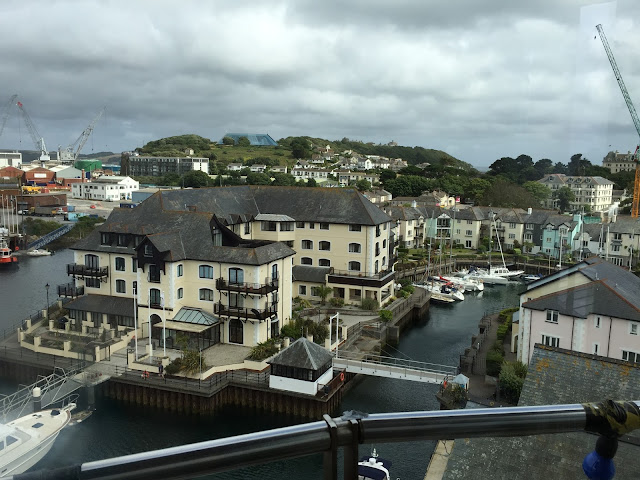As a common rule, girls of fourteen are hired out of the workhouse by persons who are in need of a cheap drudge. They get wages that will scarcely buy them clothes ; are overworked ; are left untaught or ill-taught, to become weary, slovenly, and out of heart with life ; are often left much alone, while their employers, who themselves must drudge, are absent at their place of work. These poor little girls break down and are discharged.
Charles Dickens
Emmeline, daughter of Lord Stanley of Alderley in Cheshire,
was born with a silver spoon in her mouth. She married Albert Way, a man of means,
wealth and property and was able to use her money and influence to help the
less fortunate. As Albert indulged his
interest in antiquaries and founded the Archaeological Institute, Emmeline
turned to philanthropy.
The Honourable Mrs Way was particularly concerned about the
plight of young women leaving the workhouse, who would seek employment as maids.
without the experience or refinement to achieve a good position. Near to her home in Wonham Manor, Surrey, she
set up Brockham Home for orphaned girls from Workhouses all over the country,
so that, as she later told the Poor Relief Committee of the House of Commons, the
girls should have, “just the training that they would receive from a very good
mother.” Beginning in 1859 with a group of orphaned girls aged 11 to 16, Mr and Mrs Way opened a Nursery Home for 14 infants, as a birthday present for their daughter in 1872. Eventually
both Homes were amalgamated under one Matron. The girls were trained to work in middle-class households, rather than
becoming the lowly, spurned, workhouse skivvy in a large household.
The Honourable Mrs Way used her contacts and influence to instigate the
Pauper Education Act, in 1863, which made it possible for Local Authorities to
pay from the Rates for children to live in homes, including the Brockham Home,
but at a rate not more than the Authority would pay to the Workhouse. The girls were to have:
3 pairs drawers, 2 skirts, 4 brown holland pinafores, 2
night-gowns, 4 pairs stockings, 1 jacket, 3 shifts, 4 handkerchiefs, 1 hat, 2
pairs stays, 2 pairs boots, a brush and comb, 2 flannel petticoats and 3 frocks.
Among the orphans listed living at the Brockham Home in 1881, were sisters Fanny Huggett, age 7 and Jane Huggett, age 8, both born in Milford,
Surrey. Their training was successful, as
in 1901 Fanny can be found working as a cook in Hastings to Agnes Barker, who
lived on her own means and by 1911 she was still a cook but one of 6 servants
working for a family in Sunningdale. Her
sister, Jane, was provided with an outfit to the extent of 30 shillings for her
job as a cook, working in Kent in 1891.
But while these orphans were staying at the Home as children, their
laundry was cleaned by a mother and daughter, Harriet Hammond, a 45 year old
widow, and Edith Hammond, age 19, both from Hambledon near Godalming. Ten years later Harriet was working as a Sick
Nurse in Bermondsey, but by 1901 she was a resident of Guildford Union
Workhouse, where she died two years later.
The Hambledon Poor law Union Minutes tell a sad story about
Alice Legge whom they sent to Brockham Home in 1893. The Medical Officer for
the Home reported that Alice was suffering from opacity of the cornea and a
piece of thorn had been removed from her eye. An Order for admission to Royal
London Ophthalmic Hospital at Moorfields, was arranged by the Poor Law Board of
Hambledon. Later that year a letter was
received from Brockham Home saying Alice Legge must return to Hambledon Workhouse
suggesting she should be at the seaside and have good nourishment. The board resolved to send her to the Seaside
Convalescent Home at Seaford at a cost of one guinea. However, it was considered better to send her
to the Metropolitan Infirmary for children at Danes Hill ,Margate. After 5
months, the Home in Margate considered that Alice could now be removed. After a year’s training at the Brockham Home,
Alice was sent out to service with Mrs Marshall, wearing her 30 shilling uniform, but 6 years later in July 1901 Alice Legge died at Brookwood Asylum.
And what did they do with the Workhouse boys?
Emmeline Way died in 1906, age 95. The Brockham (Way) Home closed in 1970.
©Elizabeth Lloyd
And what did they do with the Workhouse boys?





























